Better Touch Better Business
Contact Sales at Proway safe suppliers.
Safes are one of the indispensable safety devices in our homes and businesses. Not only do they protect our valuables from loss, but they also provide psychological security. However, there are a number of factors that need to be considered to ensure that a safe is effective in preventing theft.
The anti-theft performance of a safe is determined by multiple factors.
The following are some common anti-theft measures and suggestions for safes:
1. Sturdy Construction and Thick Materials:
The thickness of the safe's body and door is one of the important factors affecting its safety and anti-theft performance. Generally speaking, the thicker the box and door, the better the anti-theft performance of the safe. Here are the differences between cabinets and doors of different thicknesses:
Body thickness:
Increased thickness: A thicker cabinet means its overall structure is stronger and more difficult to break or pry open. Thicker cabinets provide better protection against impacts and drilling attacks.
Increased weight: As the thickness of the box increases, the weight of the safe also increases. This makes the safe more difficult to carry or move, making it more difficult for thieves to carry out theft.
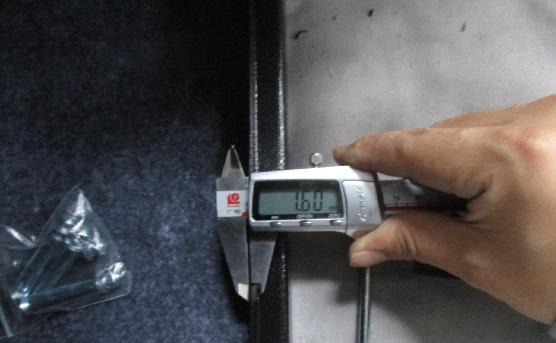
Door thickness:
Enhanced anti-destruction performance: The door is the main anti-theft component of the safe, and its thickness directly affects the safety performance of the safe. Thick doors increase the security of the safe by resisting impact, vandalism and drilling attacks.
Anti-drilling and anti-cutting: The doors of some high-end safes may be made of special materials or designed to be anti-drilling and anti-cutting to further enhance their anti-theft performance.
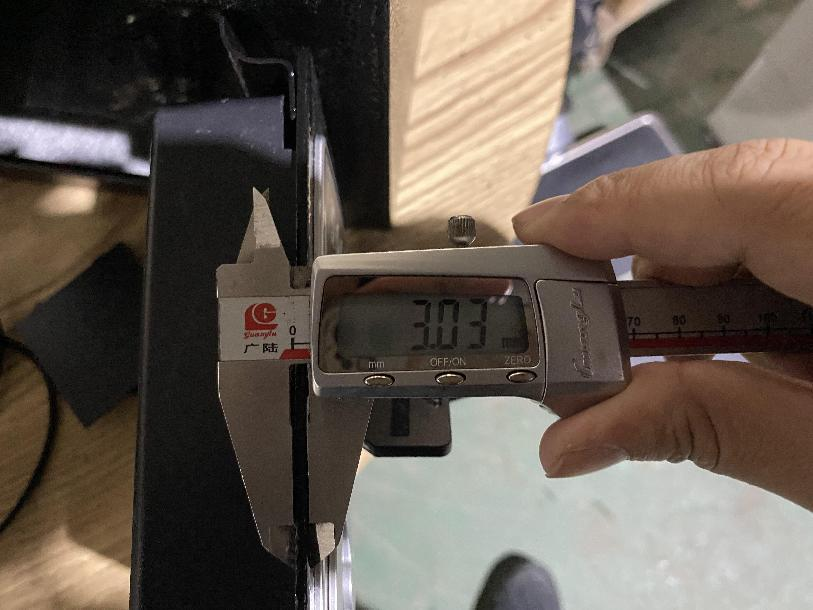
2. Advanced locking system:
Use advanced locking systems, such as digital combination locks, biometric technology (fingerprints, retina, etc.) or electronic locks, to make it more difficult to open the safe.
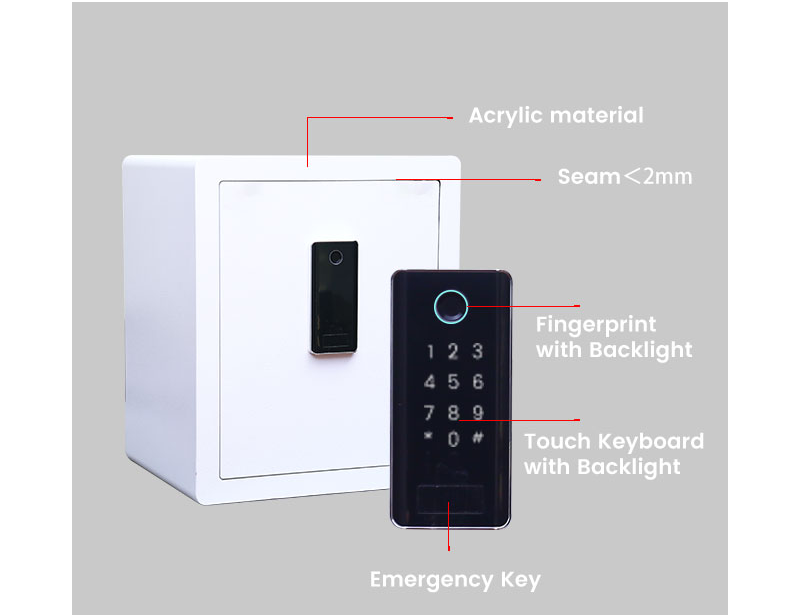
3. Anti-pry design:
Safes should have anti-pry designs, such as reinforced door gaps and special hinge designs, to prevent vandals from using crowbars or tools to pry open the safe.
Embedded door gap design:
The door seam design of some high-end safes is recessed, that is, the seam between the safe door and the box body is so small that it is almost impossible to insert a pry bar or other tools. This design effectively prevents thieves from using pry bars to pry.
Small door seam:
The DOJ's 2mm door gap standard for safes means that the maximum gap between the door and the frame of the safes should not exceed 2mm. This strict rule is to ensure that safe deposit boxes provide adequate protection against different types of attacks, such as trying to force open the safe door using a crowbar. Smaller door cracks can not only effectively block the insertion of physical intrusion tools, but also provide better fire protection to a certain extent. In order to achieve such precise door sizing requirements, safes are usually manufactured using a laser cutting process. Laser cutting is a high-precision machining method that can achieve extremely fine cutting edges while ensuring the quality of material cutting.
Reinforced hinges and lock body:
The hinges and locks of safes are one of the key parts for thieves to break into. Therefore, designs that reinforce these components are critical. Some safes use special hinge designs to make them more durable and difficult to pry or break.
Built-in prying alarm system:
Some premium safes come with built-in prying alarm systems. When the safe is pried or damaged, these systems will sound an alarm to attract the attention of surrounding people, thereby stopping the theft in time.
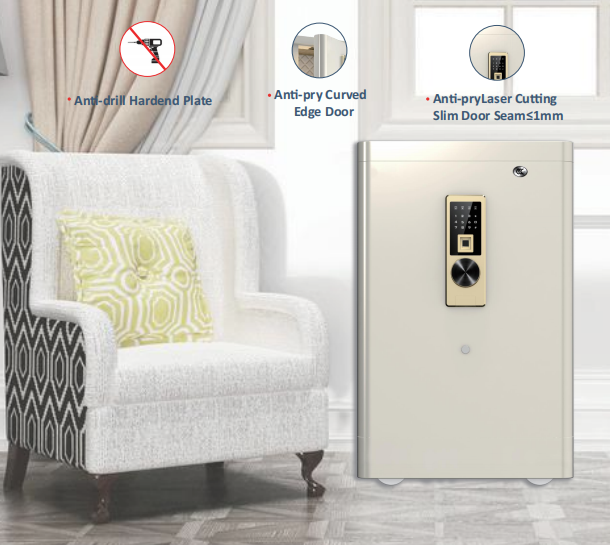
4. Anti-drilling design:
Some high-end safes will be drill-resistant, including special alloys and materials to withstand drilling attacks.
Reinforce the drilled area:
Drill holes in safes are one of the main targets for burglars. To prevent drill bits from penetrating, key areas of the safe are often thickened or reinforced, making it more difficult for drill bits to penetrate.
Use complex structural designs:
Some high-end safes adopt complex structural designs, such as multiple layers of metal plates, built-in steel reinforcement, etc., making the safe stronger and difficult to drill through.
Anti-drill coating:
Some safes are coated with a special anti-drill coating on the surface. This coating can increase the safe's drill resistance and effectively resist attacks by thieves using drills.
Internal deadbolt:
Safety box anti-drilling design The use of high-hardness materials and composite structural design in and around the deadbolt significantly improves the safety box's ability to withstand drilling attacks. This design not only takes into account physical protection, but also includes technical barriers to extend the time of illegal intrusion, thereby increasing the risk of detection and further improving the level of security of the safe. When choosing a safe, understanding its safety features and resistance to vandalism is crucial to ensuring the safety of your valuables.
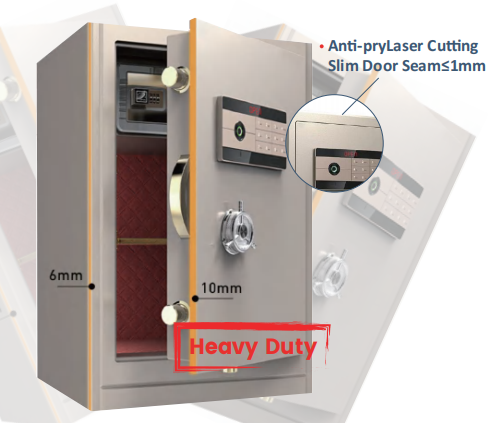
5. Anti-phishing device:
Anti-Fishing design refers to the use of special structures and technologies to prevent thieves from "fishing" items out of the safe through fishing and other means. This design is an important part of the safe’s anti-theft system.
The following is a common Anti-Fishing design measure:
Anti-phishing claws:
This device is designed to prevent any object from entering and attempting to "hook" items stored inside the safe after the door is closed. The anti-phishing claws are typically made of special structures or materials that prevent hooks from successfully entering the safe.
By adopting the Anti-Fishing design, the safe can be more reliable and secure against thieves' attempts to use phishing tools. These designs not only improve the safety of the safe, but also reduce the possibility of theft.

6. Change your password regularly:
Whether it is a digital combination lock or an electronic lock, users should change their passwords regularly to avoid using passwords that are easy to guess or crack. By regularly changing the password, the security of the safe can be effectively improved and the risk of theft reduced.
Copyright © 2025 Proway Industries co ltd. | All Rights Reserved